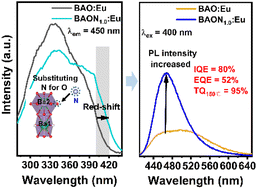ADVANCED OPTICAL MATERIALS.27 April 2023.https://doi.org/10.1002/adom.202300218
Organic–inorganic metal halides (OIMHs) with high-efficiency solar spectrum-like emission are attracting broad and current interest. Here, five 0D Zn-based hybrid halides are synthesized based on aromatic organic cations with different carbon-chain lengths: C6H5CH2NH3+ (PMA+) and C6H5(CH2)4NH3+ (PBA+). (PMA)2ZnCl4 exhibits the highest photoluminescence quantum yield of 37.2% of reported Zn-based white-emission OIMHs. The emission spectrum of (PBA)2ZnI4 indicates a color rendering index of 98, which is the highest among single-component white-light-emitting phosphors. Spectral characterizations and density functional theory calculations demonstrate that the extremely broad emission of (PBA)2ZnI4 originates from the synergistic emission of organic cations and self-trapped excitons. The optical properties of the obtained (PMA)2ZnBr4, (PMA)2ZnI4·H2O, and (PBA)2ZnCl4 are also characterized for comparison, and with the same organic cations, the PLQY decreases from chloride to bromide to iodide. This work demonstrates that the selection of appropriate organics and halogens can enable fine tuning of single-component white-light emission, satisfying varying needs for solid-state lighting.










